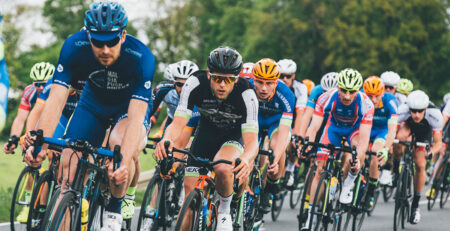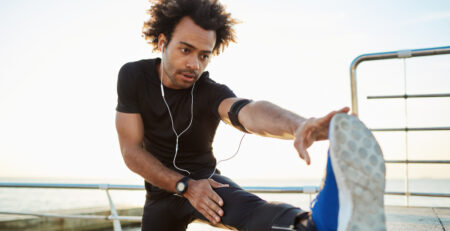Mastering Triathlon Swimming: Essential Drills for Beginners and Experienced Athletes
The vast majority of triathletes do not come from a swimming background. The swim is also by far the shortest discipline, by both time and distance, in all distances of triathlon. As former runners or cyclists, we are not scared of working out and we are happy to jump in the pool and smash swim session after swim session in the pursuit of coming out of the water in a good position but unfortunately, swimming is done in a medium called water, which is considerably denser than air. More than 800 times more dense actually. So, even the slightest thing we do under the water can make a huge difference on firstly, how much water we pull with each stroke and secondly, how much resistance we generate moving through the water.
Most triathletes who are new to swimming should spend a large portion of their initial training in the pool performing efficiency drills. We will get fit doing these anyway so, even though we are not swimming ‘properly’, we will still be getting a cardio-vascular workout and developing specific muscle strength and endurance while learning to be more efficient in the water. Even the most experienced of triathlon swimmers should include some drills into their weekly training. Of all three disciplines, swimming is the most technique dependent and it needs constant work.
There are many different drills that coaches will prescribe to swimmers and many of these will be dependent on the specific swimmer’s technique and individual areas that need to be focused on. To follow are five drills that generally cover all aspects of the freestyle stroke that most newcomers to triathlon swimming will benefit from.
The front scull
This is a great drill for teaching us how to improve our feel for the water at the front of the stroke. This is a sculling action and does not mimic the front part of the swim stroke. It is focused on developing a good feel for the water and improving our ‘grip’ on the water, which sets up a good ‘catchphrase’ and we want to carry that through the rest of the stroke.
Arms are extended forward and palms pointing outward and the drill is performed with straight arms. Keeping our arms straight, we sweep wide with our arms and allow the pitch of your hand to face outwards. The out-sweep extends as far as the width of our shoulders. We then change the pitch of your hands so they face inwards and we then sweep inwards, again with straight arms. Our hands then return to the starting position and we repeat the sequence. We breath forwards as for breaststroke but not on every sweep. We want to keep our head in the water with the head in a neutral position as much as possible in order to maintain a good body position in the water.
The mid scull
The easiest way to explain this drill is to imagine our arms as windscreen wipers moving across an imaginary screen underneath our body. Our elbows are loosely fixed, and our forearms and the changing pitch of our hands generate the power. We sweep our hands inwards and outwards, changing the pitch of the hands to maintain pressure on the water. The movement is all performed on the same plain, more or less in a line below the shoulders. Breathe every four or five arm movements. A light leg kick helps with the rhythm of the movement. Fins are very useful if, as for most triathletes, our kick is weak.
The back scull
This drill allows us to concentrate on the push phase of the stroke, and is an excellent way of gaining feel for the correct positioning of our hands and arms during this critical phase.
We start with our hands under our chest and our elbows tucked in at our sides. The drive backward is initiated by the contraction of the tricep muscles, like a tricep extension in the weights room. We straighten and extend our arms fully before returning them to the start position under our chest. We rotate or roll our bodies as we push to mimic what we do in the full freestyle stroke and in order to move the hips out of the way of the final push of the hand.
The underwater catch drill
The catch is the all-important point at which we gain hold of the water at the front end of the stroke. The one thing we don’t want to do in the catch is rush it. The freestyle strokes starts slowly once the hand enters the water and accelerates continuously until the hand exits the water at the hip. The catch is about setting the starting point of the swim stroke and getting a good grip on the water.
With one arm extended and the other remaining at our side, kick strongly (with fins if we need), we roll our body into the front end of the stroke while maintaining a streamlined position with the leading hand. We press our leading hand downward while establishing a slightly high elbow position. So our wrist is higher than our fingertips; our elbow is higher than our wrist and our shoulder is higher than our elbow. This is the ‘catch’. We should feel water pressure building on the underside of our forearm and hand, and as a result we should feel a forward movement being initiated.
As soon as the hold on the water has been achieved, we let it go and return to the front of the stroke to repeat this drill. The movement is a sculling action rather than a stroke and is similar to a short and narrow single arm pull. We then repeat. It is important to reach forward and rotate our body through the shoulders and hips with every catch. We don’t want this to be isolated to the arm. We are initiating the first part of the complete freestyle stroke.
The single arm drill
While maintaining a strong even kick with fins if required, we keep one arm extended and then feed the recovering arm into the water alongside the extended arm. Head position is as it would be in a full freestyle stroke. We should be rolling into the stroke as our hand extends under the surface slightly forward of where it entered the water. We want good body rotation with our armpit pointing down at full extension. We press downward with our leading hand as we did in the ‘underwater catch drill’, maintaining a high wrist; elbow and shoulder.
This is the beginning of the pull phase. As the pull is executed, it’s vital we keep the opposite arm nice and straight so that we maintain a streamlined body position. We extend fully at the end of the pull phase and rotate our body in the opposite direction so that the hips roll out of the way. All the time accelerating the hand through the stroke without losing purchase on the water. We should avoid a pause at the end of the stroke because the completion of the push phase is continuous with the start of the arm recovery above the water.






Leave a Reply